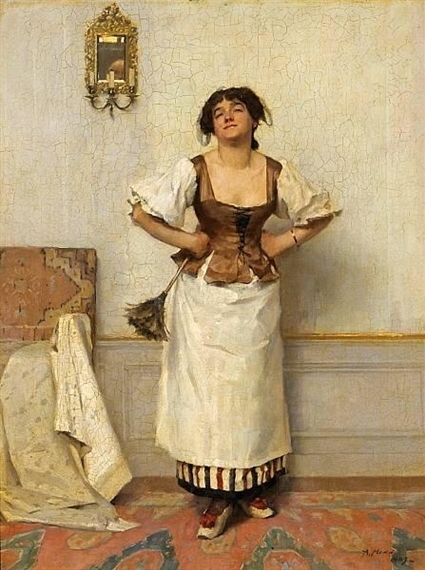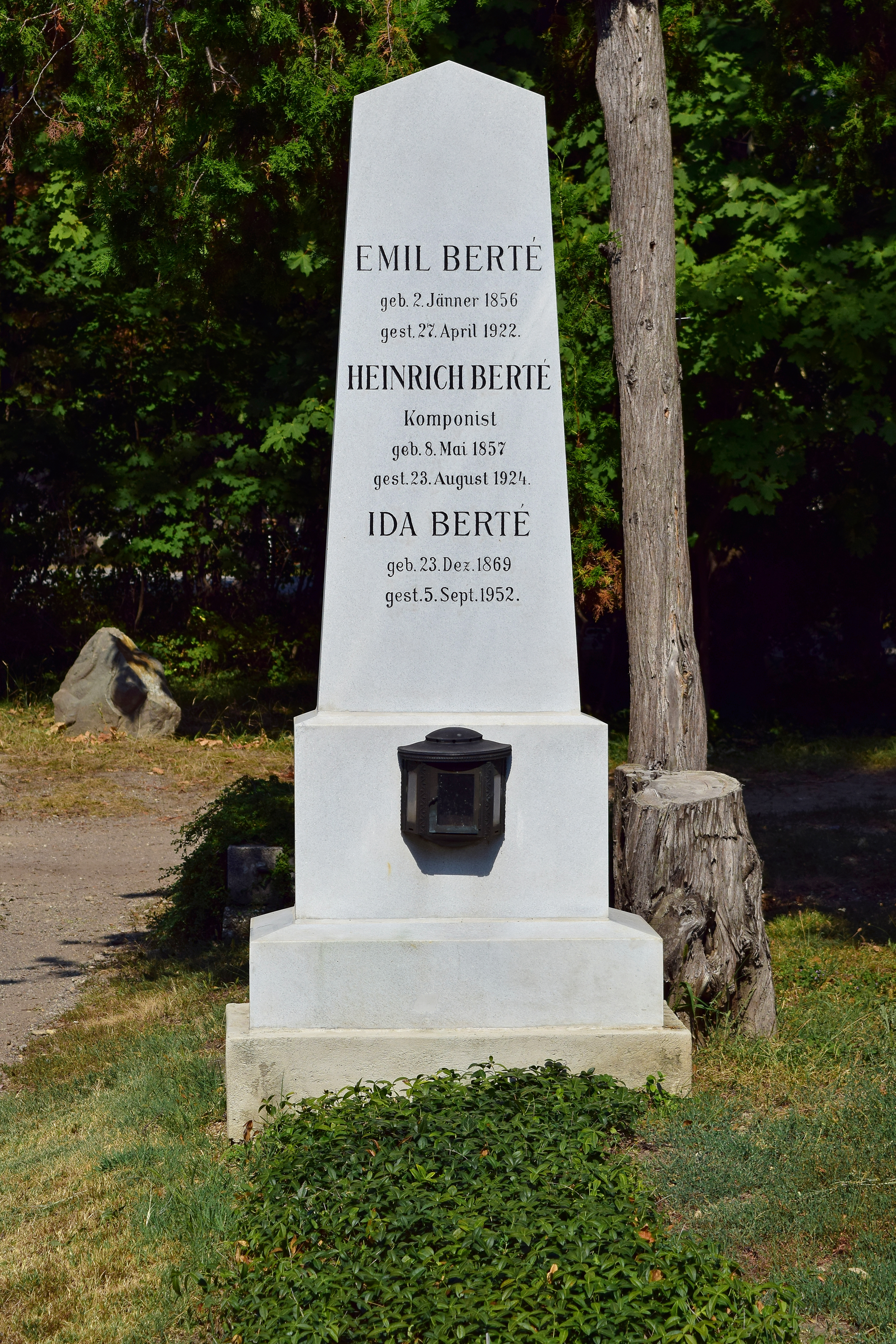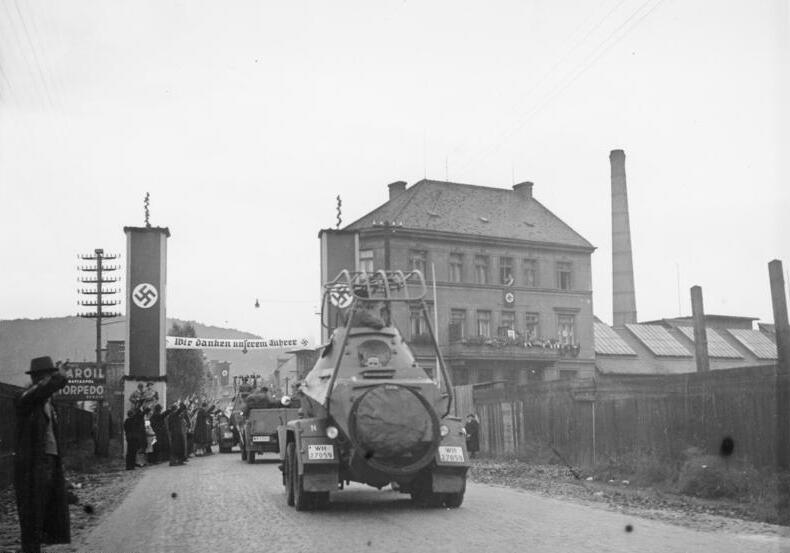|
Gretl Schörg
Gretl Schörg (17 January 1914 – 4 January 2006) was an Austrian operatic soprano and actress. She was particularly known for her performances in operettas. Her signature roles included Dodo in ''Wedding Night in Paradise'', Josepha Vogelhuber in ''The White Horse Inn'', Juliette in ''Der Graf von Luxemburg'', Julischka in ''Maske in Blau'', Laura in ''Der Bettelstudent'', and Pepi in '' Wiener Blut''. She made several operetta recordings for Telefunken, Columbia Records, and Polydor Records. She was also active as a dramatic actress on the stage and in films. In April 2004 she was awarded the Austrian Cross of Honour for Science and Art, 1st class. Life and career Born in Vienna, Schörg first trained for the profession of typist. In 1937, at the age of 23, she won a beauty contest and became "Queen of Danube". That same year she made her stage debut in Ostrava at the Antonín Dvořák Theatre in the world premiere of Ödön von Horváth's play ''Der jüngste Tag''. She spent ... [...More Info...] [...Related Items...] OR: [Wikipedia] [Google] [Baidu] |
Austria
Austria, , bar, Östareich officially the Republic of Austria, is a country in the southern part of Central Europe, lying in the Eastern Alps. It is a federation of nine states, one of which is the capital, Vienna, the most populous city and state. A landlocked country, Austria is bordered by Germany to the northwest, the Czech Republic to the north, Slovakia to the northeast, Hungary to the east, Slovenia and Italy to the south, and Switzerland and Liechtenstein to the west. The country occupies an area of and has a population of 9 million. Austria emerged from the remnants of the Eastern and Hungarian March at the end of the first millennium. Originally a margraviate of Bavaria, it developed into a duchy of the Holy Roman Empire in 1156 and was later made an archduchy in 1453. In the 16th century, Vienna began serving as the empire's administrative capital and Austria thus became the heartland of the Habsburg monarchy. After the dissolution of the H ... [...More Info...] [...Related Items...] OR: [Wikipedia] [Google] [Baidu] |
Antonín Dvořák Theatre
The Antonín Dvořák Theatre is an opera house in Ostrava, Czech Republic, which opened in 1907. Since 1919 it has been one of two permanent venues of the National Moravian Silesian Theatre. History The Neo-baroque building of the theatre was designed by architect Alexander Graf. It was built by the Ostrava company ''Noe & Storch''. The Antonín Dvořák Theatre was the first building in what is now the Czech Republic to use reinforced concrete beams. The interior was designed by sculptors of the company ''Johann Bock & Son'' . The sculptures decorating the facade were made by Eduard Smetana and Leopold Kosiga. ''Drama'' and ''Music'', two reliefs in the main foyer of the theatre, were donated by academic sculptor Helena Scholzová ( Helen Zelezny-Scholz). The ''Antonín Dvořák Theatre'' was opened on 28 September 1907, as a German theatre. Up to 1919, the performances were solely in German. Following the World War I, the theatre passed to the hands of Czechoslovak s ... [...More Info...] [...Related Items...] OR: [Wikipedia] [Google] [Baidu] |
Ludwig Schmidseder
Ludwig Schmidseder (24 August 1904, in Passau – 21 June 1971, in Munich) was a German composer and pianist of the "Light Muse". Several of his Schlager compositions are still popular tunes today. The young Schmidseder followed his father's wishes and trained as a banker, whilst taking piano lessons in secret. He furthered his musical education at the Munich Conservatorium, then left for South America in 1926, ending up in Rio de Janeiro. Starting out as a dishwasher, he went on to become an entertainer and play in a trio on ocean cruises. Schmidseder composed music for the trio, and developed into a virtuoso piano player. From 1930 he worked in Berlin, composing film music, creating operettas and writing more than 500 songs, some of which became much-loved hits. He moved from being a bar pianist (until 1936) to being the house composer at the old Berlin Metropol-Theatre. His operetta ''Die Oder Keine'' (''That One or No One'') was performed more than 600 times. Schmidseder ... [...More Info...] [...Related Items...] OR: [Wikipedia] [Google] [Baidu] |
World War II
World War II or the Second World War, often abbreviated as WWII or WW2, was a world war that lasted from 1939 to 1945. It involved the vast majority of the world's countries—including all of the great powers—forming two opposing military alliances: the Allies and the Axis powers. World War II was a total war that directly involved more than 100 million personnel from more than 30 countries. The major participants in the war threw their entire economic, industrial, and scientific capabilities behind the war effort, blurring the distinction between civilian and military resources. Aircraft played a major role in the conflict, enabling the strategic bombing of population centres and deploying the only two nuclear weapons ever used in war. World War II was by far the deadliest conflict in human history; it resulted in 70 to 85 million fatalities, mostly among civilians. Tens of millions died due to genocides (including the Holocaust), starvation, ma ... [...More Info...] [...Related Items...] OR: [Wikipedia] [Google] [Baidu] |
Soubrette
A soubrette is a type of operatic soprano voice ''fach'', often cast as a female stock character in opera and theatre. The term arrived in English from Provençal via French, and means "conceited" or "coy". Theatre In theatre, a soubrette is a comedy character who is vain and girlish, mischievous, lighthearted, coquettish and gossipy—often a chambermaid or confidante of the ingénue. She often displays a flirtatious or even sexually aggressive nature. The soubrette appeared in commedia dell'arte scenarios, often in the role of Columbina, where the actress would provide the details of her behavior and dialogue. From there, she moved to the works of Molière, which were influenced by the Commedia; the role of Dorine in ''Tartuffe'' (1664) fits the description. A famous example, though a hundred years later, is Suzanne in Beaumarchais' ''Le Mariage de Figaro'' (1784). Opera In classical music and opera, the term ''soubrette'' refers to both a soprano voice type and a type of opera ... [...More Info...] [...Related Items...] OR: [Wikipedia] [Google] [Baidu] |
Komische Oper Berlin
The Komische Oper Berlin is a German opera company based in Berlin. The company produces opera, operetta and musicals. The opera house is located on Behrenstraße, just a few steps from Unter den Linden. Since 2004, the Komische Oper Berlin, along with the Berlin State Opera, the Deutsche Oper Berlin, the Berlin State Ballet, and the Bühnenservice Berlin (Stage and Costume Design), has been a member of the Berlin Opera Foundation. History of the building The theatre was built between 1891 and 1892 by architects Ferdinand Fellner and Hermann Helmer for a private society. It first opened on 24 September 1892 as ''"Theater Unter den Linden"'' with Adolf Ferron's operetta ''Daphne'' and Gaul and Haßreiter's ballet ''Die Welt in Bild und Tanz''. The theatre was primarily a vehicle for operetta, but was also used for various other events and balls. Around 800 people could be seated in the stalls, and the balconies and various en-suite dinner rooms housed about a further 1,70 ... [...More Info...] [...Related Items...] OR: [Wikipedia] [Google] [Baidu] |
Das Dreimäderlhaus
''Das Dreimäderlhaus'' (''House of the Three Girls''), adapted into English-language versions as ''Blossom Time'' and ''Lilac Time'', is a Viennese pastiche operetta with music by Franz Schubert, rearranged by Heinrich Berté (1857–1924), and a libretto by Alfred Maria Willner and . The work gives a fictionalized account of Schubert's romantic life, and the story was adapted from the 1912 novel ''Schwammerl'' by Rudolf Hans Bartsch (1873–1952). Originally the score was mostly Berté, with just one piece of Schubert's ("Ungeduld" from ''Die schöne Müllerin''), but the producers required Berté to discard his score and create a pasticcio of Schubert music. The original production opened at the Raimundtheater in Vienna on 15 January 1916 and ran for over 650 performances in its original run in Austria and for hundreds more in Germany, followed by many successful revivals. It starred Fritz Schrödter as Schubert and Anny Rainer as Hannerl. Schrödter was already 60 ... [...More Info...] [...Related Items...] OR: [Wikipedia] [Google] [Baidu] |
Franz Schubert
Franz Peter Schubert (; 31 January 179719 November 1828) was an Austrian composer of the late Classical and early Romantic eras. Despite his short lifetime, Schubert left behind a vast ''oeuvre'', including more than 600 secular vocal works (mainly lieder), seven complete symphonies, sacred music, opera Opera is a form of theatre in which music is a fundamental component and dramatic roles are taken by singers. Such a "work" (the literal translation of the Italian word "opera") is typically a collaboration between a composer and a libr ...s, incidental music, and a large body of piano and chamber music. His major works include "Erlkönig (Schubert), Erlkönig" (D. 328), the Trout Quintet, Piano Quintet in A major, D. 667 (''Trout Quintet''), the Symphony No. 8 (Schubert), Symphony No. 8 in B minor, D. 759 (''Unfinished Symphony''), the Symphony No. 9 (Schubert), "Great" Symphony No. 9 in C major, D. 944, the String Quintet (Schubert), String Quintet (D. 956), ... [...More Info...] [...Related Items...] OR: [Wikipedia] [Google] [Baidu] |
Heinrich Berté
Heinrich Berté (), born Heinrich Bettelheim (8 May 1858 – 23 August 1924) was an Austria-Hungarian composer of operas and operettas. Life Heinrich Berté was born in Galgócz, Hungary (now Hlohovec, Slovakia) in a Jewish family. At the beginning of his career, he was a relatively unsuccessful composer of ballets and an opera. In 1911 he was offered a libretto by the writer Alfred Maria Willner for an opera about Franz Schubert, based on the novel, '' Schwammerl'' by Rudolf Hans Bartsch, but this was turned down and he was told to use Schubert's music in a pastiche instead. On 15 January 1916 his first performed work, an arrangement of Franz Schubert's ''Das Dreimäderlhaus'' was premiered in the Raimund Theater in Vienna, Gretl Schörg's voice was discovered during the run. The operetta was translated into 22 languages and in 1921 it opened as ''Blossom Time'' in New York City, in 1922 as '' Lilac Time ''in London), and was performed in over 60 countries, it was a worldwide ... [...More Info...] [...Related Items...] OR: [Wikipedia] [Google] [Baidu] |
Ústí Nad Labem
Ústí nad Labem (, , ) is a city in the Czech Republic. It has about 92,000 inhabitants. It is the capital of its eponymous region and district. It is a major industrial centre and, besides being an active river port, is an important railway junction. Administrative division Ústí nad Labem is divided into four boroughs, which are further divided into 22 administrative parts: *Ústí nad Labem-město (parts Ústí nad Labem-centrum, Božtěšice, Bukov, Habrovice, Hostovice, Klíše, Předlice, Skorotice, Strážky, Vaňov and Všebořice); *Ústí nad Labem-Neštěmice (parts Krásné Březno, Mojžíř and Neštěmice); *Ústí nad Labem-Severní terasa (part Severní Terasa); *Ústí nad Labem-Střekov (parts Brná, Církvice, Kojetice, Olešnice, Sebuzín, Střekov and Svádov). Etymology The name of Ústí nad Labem is formed from the Old Czech ' ("river mouth") and ' (the Elbe River). It thus literally means "Mouth-upon-the-Elbe", in reference to its location at the B ... [...More Info...] [...Related Items...] OR: [Wikipedia] [Google] [Baidu] |
Opera House
An opera house is a theatre building used for performances of opera. It usually includes a stage, an orchestra pit, audience seating, and backstage facilities for costumes and building sets. While some venues are constructed specifically for operas, other opera houses are part of larger performing arts centers. Indeed, the term ''opera house'' is often used as a term of prestige for any large performing-arts center. History Italy is a country where opera has been popular through the centuries among ordinary people as well as wealthy patrons and it continues to have many working opera houses such as Teatro Massimo in Palermo (the biggest in Italy), Teatro di San Carlo in Naples (the world's oldest working opera house) and Teatro La Scala in Milan. In contrast, there was no opera house in London when Henry Purcell was composing and the first opera house in Germany, the Oper am Gänsemarkt, was built in Hamburg in 1678, followed by the Oper am Brühl in Leipzig in 1693, and t ... [...More Info...] [...Related Items...] OR: [Wikipedia] [Google] [Baidu] |
Theater In Der Josefstadt
The Theater in der Josefstadt is a theater in Vienna in the eighth district of Josefstadt. It was founded in 1788 and is the oldest still performing theater in Vienna. It is often referred to colloquially as simply ''Die Josefstadt''. Following remodeling and rebuilding in 1822 — celebrated by the performance of the overture '' Die Weihe des Hauses'' ('Consecration of the House') by Beethoven — opera was staged there including Meyerbeer and Wagner. From 1858 onwards the theatre gave up opera and instead concentrated on straight theatre and comedy. Major figures in musical and theatrical history connected with the house *Ludwig van Beethoven and Richard Wagner conducted there. *Johann Nestroy and Ferdinand Raimund were connected to the theater as actors and poets. *Johann Strauss I performed in the Sträußelsälen. *In 1814, Ferdinand Raimund had his Vienna debut as Franz Moor in ''Die Räuber'' by Friedrich Schiller. *In 1822, '' Die Weihe des Hauses'' composed and direct ... [...More Info...] [...Related Items...] OR: [Wikipedia] [Google] [Baidu] |







